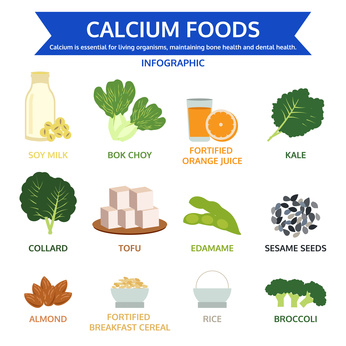
Consuming fresh fruits and veggies may be the best way to reduce inflammation. These foods could help reduce inflammation by containing antioxidants. Vitamins and fiber are abundant in fresh fruits and veggies. These vegetables can help you reduce your risk for obesity by being low in calories.
Avoid white foods to reduce inflammation
Reduce your intake of white foods if you want to lower inflammation. These include white flour, pasta, and rice. Instead, include whole grains and lean protein along with vegetables in your meals. Whole grains such as brown and other whole grains can help reduce inflammation. Regular physical activity is highly recommended. Regular exercise is good for your health and can reduce inflammation, whether you are an avid runner or a bodybuilder.

Eat higher-fiber foods
It is possible to lower inflammation by eating lots of fruits and veggies. These foods are high in fiber and are packed with phytonutrients and antioxidants. Leafy greens as well as cruciferous vegetables are great choices. The best anti-inflammatory foods are fresh herbs, spices, and legumes. The strongest antiinflammatory effects are seen in citrus fruits, oranges, and tart cherries.
Reduce inflammation by eating fish
Consuming fish can help reduce inflammation. Fish is rich in omega-3 fatty acid, which is a great source of essential fatty acids to maintain a healthy immune system. These acids can help fight inflammation and decrease joint pain. They can also reduce cholesterol.
Reduce inflammation by drinking green tea
Green tea is a great way for the body to reduce inflammation. It has many benefits. Numerous studies have shown that green tea can reduce inflammation in the gut and heart. Researchers from the Ohio State University also found an association between green tea and lower risk of health problems, including obesity.
To reduce inflammation, eat high-fiber food
High-fiber foods can make a huge difference in your health. They are important for digestion health and can help lower the chances of you contracting diseases like inflammation. Fiber-rich diets are more likely than others to live longer.

In order to reduce inflammation, you should avoid white foods.
Increasing your sleep can help you reduce inflammation. Getting seven to eight hours of sleep is important for a healthy lifestyle. It is important to drink lots of water and exercise as often as you can. You should avoid watching TV or spending too much time on the computer. Getting plenty of sleep will also reduce stress.
FAQ
Is it possible to have a weak immune system due to being cold?
Cold causes a decrease in immune system strength. This is because white blood cells are less effective at fighting infection. However, being cold also makes you feel better because your body releases endorphins into your brain which reduce pain.
What is the difference of fat and sugar?
Fat can be a source of energy that is obtained from food. Sugar is a sweetener found in fruits, vegetables, and other foods. Both sugars and fats have the same calories. However, fats provide more calories than sugars.
Fats are stored in your body and can cause obesity. They cause cholesterol buildup in arteries which may lead to heart attacks and strokes.
Sugars can be quickly absorbed by your body and give you instant energy. This causes blood glucose levels to rise. High blood glucose levels can pose a danger because they increase the chance of developing type II Diabetes.
What can be done to increase your immune system's effectiveness?
Human bodies are made up of trillions upon trillions of cells. These cells combine to form organs or tissues that serve specific functions. When one cell dies, another cell replaces it. The chemical signals known as hormones are used to communicate between cells. Hormones control all bodily functions, including growth, development, metabolism, immunity and immune system.
Hormones can be described as chemicals produced by glands in the body. They travel through the blood stream and act like messengers to control how our bodies function. Some hormones come from the body and others are produced outside.
The hormone-producing glands release their contents into bloodstream. This is when hormone production starts. Once released, hormones move through the body until they reach their target organ. In some cases hormones can remain active for a very short time. Some hormones remain active for longer periods of time and can continue to have an impact on the body's function long after they are gone.
Some hormones can only be produced in large quantities. Others are produced in small amounts.
Some hormones are made at specific times in your life. For instance, estrogen is produced during puberty, pregnancy, menopause, and old age. Estrogen aids women in developing breasts, maintaining bone density and preventing osteoporosis. It is also known to promote hair growth and keep skin soft and smooth.
How can you live your best life every day?
To live a happy life, the first step is to discover what makes you happy. Once you've identified what makes your happy, you can start to work backwards. You can also inquire about the lives of others.
You can also check out books like "How to Live Your Best Life" from Dr. Wayne Dyer. He talks about how to find happiness and fulfillment at all stages of our lives.
How does an antibiotic work?
Antibiotics are medications that kill harmful bacteria. Antibiotics are used for treating bacterial infections. There are many kinds of antibiotics. Some can be taken orally while others can be injected. Others are topically applied.
Antibiotics can often be prescribed for people who have been infected with certain germs. To prevent shingles, an oral antibiotic may be prescribed to someone who has had chicken pox. Or, if someone has had strep throat, he or she might receive an injection of penicillin to help prevent pneumonia.
If antibiotics are to be administered to children, they must be prescribed by a doctor. Children are more susceptible to side effects from antibiotics than adults.
Diarrhea, the most common side-effect of antibiotics, is probably diarrhea. Other side effects include dizziness, nausea and vomiting, dizziness, stomach cramps, dizziness, allergic reactions, dizziness, dizziness, stomach cramps, diarrhea, nausea, vomiting, allergy, headaches, dizziness, dizziness, dizziness, stomach cramps, and stomach cramps. These side effects typically disappear once treatment is complete.
Statistics
- According to the Physical Activity Guidelines for Americans, we should strive for at least 150 minutes of moderate intensity activity each week (54Trusted Source Smoking, harmful use of drugs, and alcohol abuse can all seriously negatively affect your health. (healthline.com)
- According to the 2020 Dietary Guidelines for Americans, a balanced diet high in fruits and vegetables, lean protein, low-fat dairy and whole grains is needed for optimal energy. (mayoclinichealthsystem.org)
- This article received 11 testimonials and 86% of readers who voted found it helpful, earning it our reader-approved status. (wikihow.com)
- The Dietary Guidelines for Americans recommend keeping added sugar intake below 10% of your daily calorie intake, while the World Health Organization recommends slashing added sugars to 5% or less of your daily calories for optimal health (59Trusted (healthline.com)
External Links
How To
What does the meaning of "vitamin?"
Vitamins are organic substances found naturally in food. Vitamins allow us to absorb nutrients from food. The body cannot make vitamins; therefore, they must be obtained from food.
There are two types of vitamins: water soluble and fat soluble. Water-soluble vitamins dissolve in water easily. These include vitamin C (thiamine), Vitamin B1 (riboflavin), Vitamin B2 (riboflavin), Vitamin B3 (niacin), Vitamin B6 (pyridoxine), Vitamin C, B1 (thiamine), Vitamin B2 (riboflavin), Vitamin B3 (niacin), and Vitamin B6 (pyridoxine). The liver and fat soluble vitamins are stored in fatty tissue. Vitamin D, E, K and A are some examples.
Vitamins are classified based on their biological activity. There are eight major types of vitamins.
-
A - Vital for healthy growth.
-
C - important for proper nerve function and energy production.
-
D - Vital for healthy bones and teeth
-
E - needed for good vision and reproduction.
-
K - essential for healthy nerves, muscles, and joints.
-
P – vital for building strong bones.
-
Q - aids digestion, absorption and absorption iron
-
R is required for the production of red blood cells.
The recommended daily allowance for vitamins (RDA) varies according to age, gender, or physical condition. The U.S. Food and Drug Administration has established the RDA values.
For adults 19 years and over, the RDA vitamin A intake is 400mg/day. For fetal development, pregnant women require 600 micrograms per daily. Children ages 1-8 require 900 micrograms per day. Infants under one year of age require 700 micrograms per day, but this amount decreases to 500 micrograms per day between 9 months and 12 months of age.
Children aged 1-18 years need 800 micrograms daily, while children overweight require 1000 micrograms per days. Children who are severely obese or underweight will need 1200 micrograms each day.
Children 4-8 years old with anemia will need 2200 mg of vitamin D daily.
Adults over 50 years of age need 2000 micrograms per day for general health. Because of their higher nutrient needs, women who are pregnant or nursing need 3000 mg per day.
1500 micrograms are required daily by adults over 70 because they lose approximately 10% of their muscle each decade.
Women who are pregnant, nursing or breastfeeding need more than the RDA. Pregnant mothers need 4000 micrograms per daily during pregnancy and 2500 after giving birth. Breastfeeding mothers need to consume 5000 micrograms each day when breastmilk has been produced.